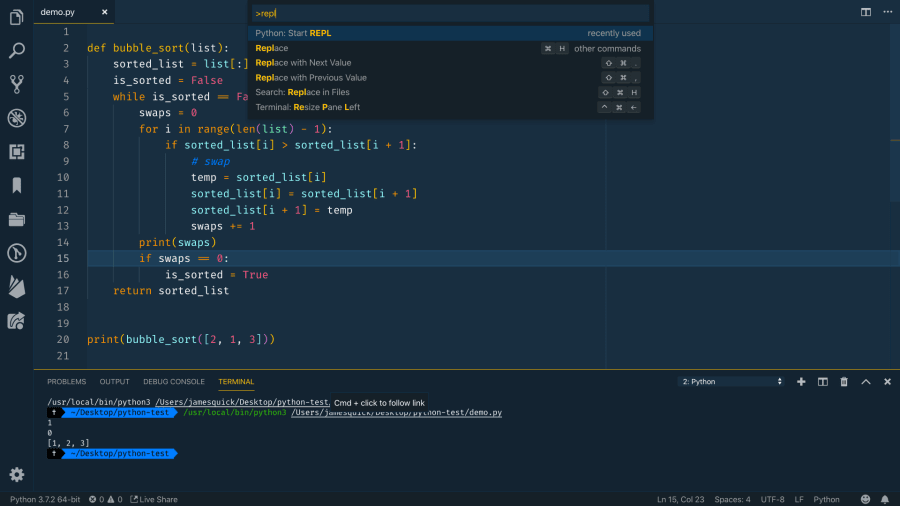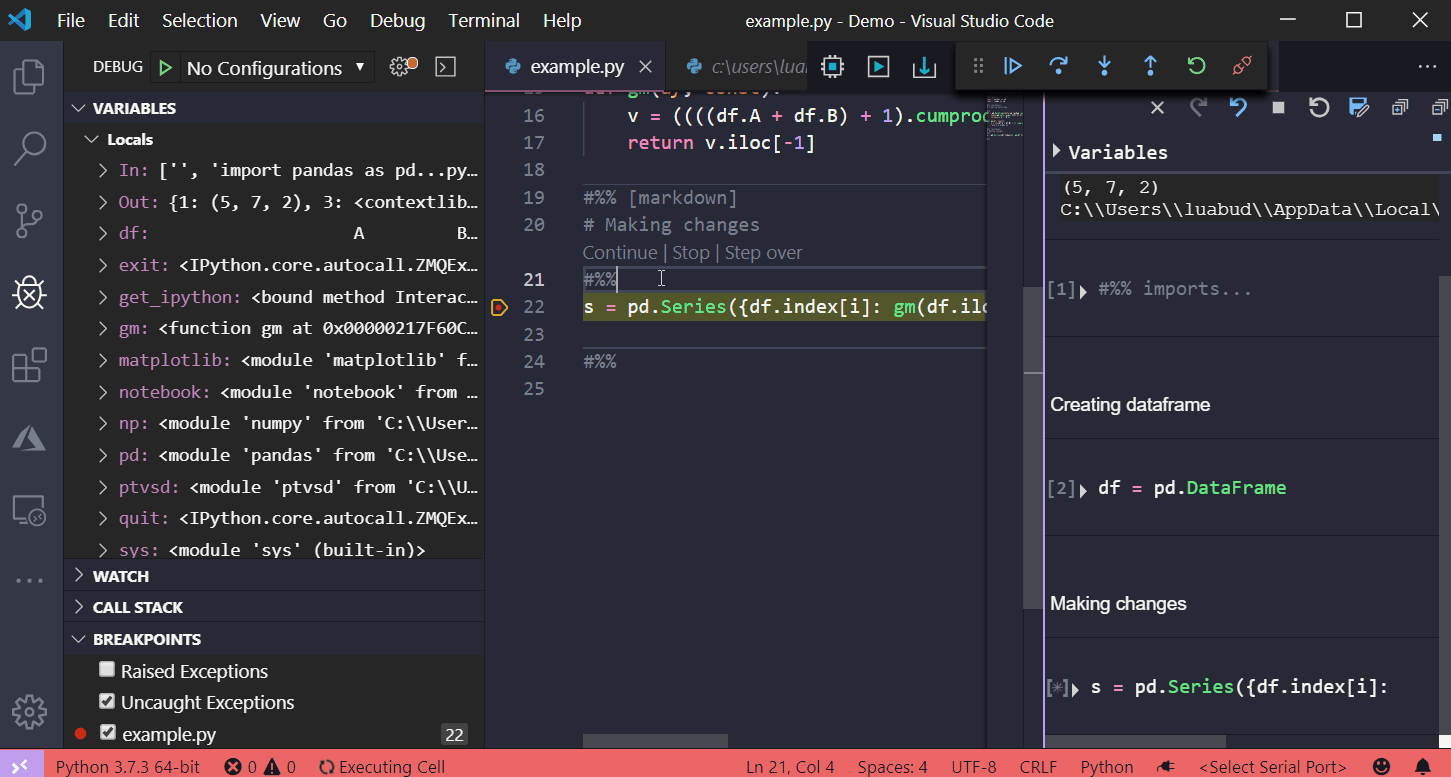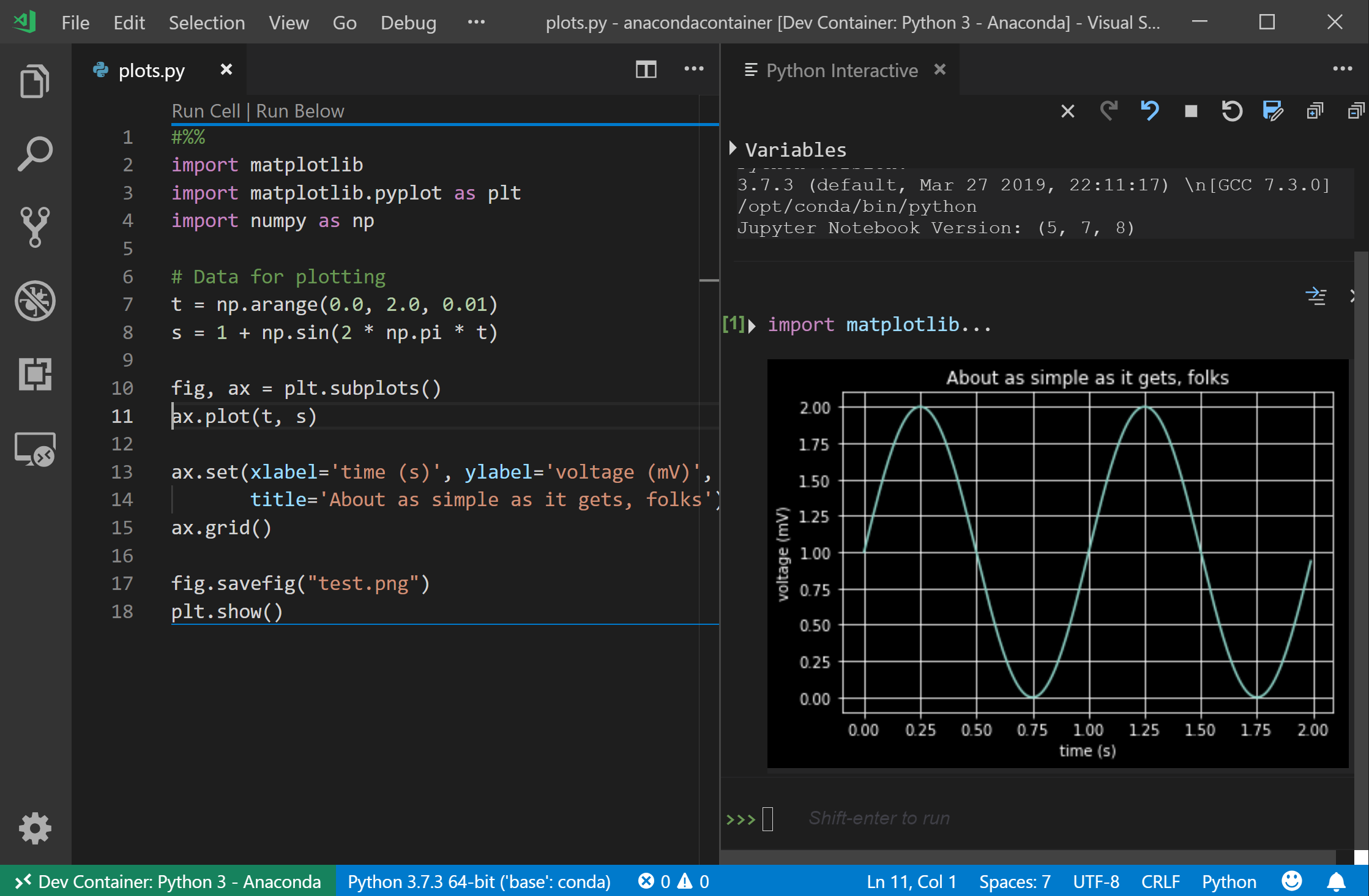

- #Visual studio code vs visual studio for python install#
- #Visual studio code vs visual studio for python software#
- #Visual studio code vs visual studio for python plus#
- #Visual studio code vs visual studio for python free#
- #Visual studio code vs visual studio for python mac#
#Visual studio code vs visual studio for python mac#
Ones! (for Mac users, replace all the Ctrl sequences with cmd, exceptįor the integrated terminal sequence, which still uses Ctrl) VS Code has many, many keyboard shortcuts.

On MacOS and Linux, you can also type in Ctrl-d (thisĬongratulations, you've edited your first file in VS Code! Keyboard Shortcuts There are a couple of ways to exit Python.

Ok, now let's close Python by typing in > exit()
#Visual studio code vs visual studio for python free#
Our code works! Feel free to try it out with your own name. Python will then print out Welcome to CS61A, Laryn! Let's see what itĭoes! Type in the following: > welcome('Laryn') Recall that we defined a function called welcome. Notice that the Python interpreter says >. welcome.py is the name of the Python file we want to run.The -i flag tells Python to start in interactive mode, whichĪllows you to type in Python commands from your terminal.python3 is the command that starts Python.In the terminal, start by typing python3 -i welcome.py Running Pythonīack in our terminal, we're currently in our example directory. To save, you can just hit Ctrl-s ( cmd-s on Mac) and the white dot by the file name should disappear. Once you've finished typing, VS Code should look something like this: You have to do is type in the following: def welcome(name): Don't worry, we don't expect you to know any Python yet! All We'll be writing a short program that prints out a welcome message whenĮxecuted. Now we have VS Code open, we can begin writing our first Python file. Python extension for now, and ignore any other pop-ups that may appear.
#Visual studio code vs visual studio for python install#
We'll talk more about extensions later, but just install the A pop-up will appear in the bottom right corner prompting you to install
#Visual studio code vs visual studio for python plus#
To create a new file, either right click below EXAMPLEĪnd select "New File" or click the page icon with a plus in the corner. Open the explorer (page icon in the top leftĬorner) then click EXAMPLE. You can also open VS Code in your current working directory via command line: code. The UNIX commands you learned in Lab 0: mkdir ~/Desktop/exampleįor Mac users, you'll most likely find VS Code in Applications.įor Ubuntu users, you'll most likely find VS Code by putting itįor Windows users, you'll most likely find VS Code in Program Files. Let's first create and navigate to a directory called example, using Recall from Lab 0 that you can open a terminal on the school Of either finding the application or opening it up from the terminal. Example: welcome.pyīy now, you should have VS Code installed. Instructions to install it on your computer.
#Visual studio code vs visual studio for python software#
VS Code great for anything from simple Python scripting to denser software engineering

It's known for being relatively lightweight while also incorporating key featuresįound in modern IDE's such as Git integration and an extensive debugger. To get started writing your own, check out the VS Code renderer api documentation.Visual Studio Code (VS Code) is an open source text editor developed by Microsoft and is free to use.


 0 kommentar(er)
0 kommentar(er)
